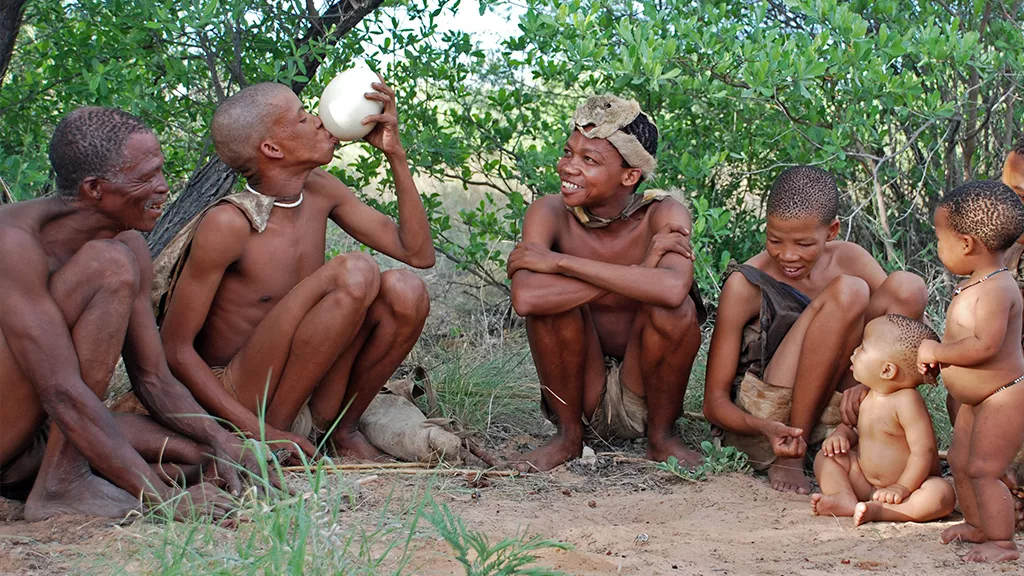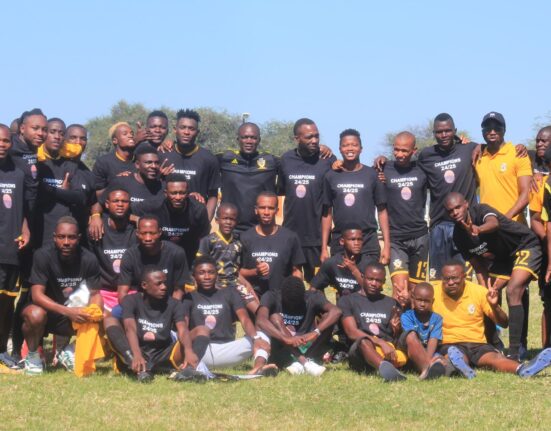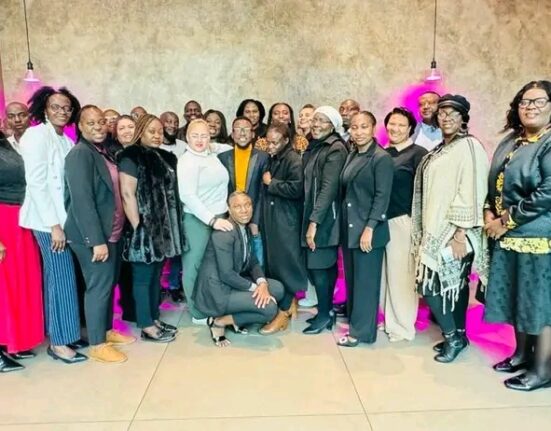The San people, one of the world’s oldest and most distinctive indigenous groups, have long called the vast deserts and savannahs of southern Africa home. In Namibia, the San are a vital part of the cultural and historical fabric, offering invaluable insights into human history, survival, and resilience. With a way of life that stretches back for thousands of years, the San people’s legacy is rich, though it faces immense challenges today due to historical trauma, modern pressures, and ongoing struggles for recognition and rights.
This article explores the unique culture, historical significance, and modern-day challenges faced by the San people of Namibia, shedding light on their efforts to preserve an ancient way of life while navigating the complexities of the modern world.
The Origins and History of the San People
The San people, often referred to as Bushmen, are thought to have lived in southern Africa for tens of thousands of years. Genetic studies suggest that the San are the oldest continuous culture in the world, making them direct descendants of early human ancestors who roamed the African continent long before other groups evolved. The San are part of a broader cultural and linguistic group known as the Khoisan, which also includes the Khoikhoi people.
Historically, the San lived as hunter-gatherers, with a deep knowledge of the environment and its resources. They roamed vast territories in search of food and water, practicing sustainable living that ensured their survival across challenging landscapes like the Kalahari Desert and Namibia’s rugged northern and western regions. Over time, the San developed a remarkable understanding of the natural world, including medicinal plants, animal behavior, and seasonal changes in their environment.
San society was traditionally based on small, mobile bands. These groups lived in harmony with nature, relying on oral traditions, storytelling, dance, music, and art to transmit knowledge and maintain social cohesion. The click languages of the San, known for their distinctive consonant sounds, are among the world’s oldest languages and play an important role in their cultural identity.
However, the history of the San people is marred by colonialism, displacement, and marginalization. The arrival of European settlers, followed by the expansion of agricultural settlements and livestock farming, greatly disrupted the traditional San way of life. Over the centuries, the San were pushed into more remote areas, often subjected to violence, and faced widespread land dispossession.
The San in Namibia Today
Today, the San people of Namibia are found in several regions, including the Kavango, Zambezi, Omusati, and Hardap regions. Their communities are often small and scattered, with many San now living in rural or marginalized areas. Despite their rich heritage, the San continue to face substantial socio-economic challenges, including poverty, lack of education, poor healthcare access, and inadequate housing.
The Namibian government, recognizing the need to preserve the cultural heritage and improve the welfare of the San people, has introduced a number of policies aimed at supporting them. These include efforts to improve education and healthcare in San communities, as well as granting them land rights and promoting cultural tourism. However, much work remains to address the deep-seated inequalities and provide adequate opportunities for these communities.
Cultural Preservation: Language, Traditions, and Art
The San people’s cultural identity is inseparable from their ancient traditions and customs. Despite the many challenges they face, the San continue to practice their traditional ways, preserving their language, arts, and knowledge of the land.
Language
The San languages, especially those spoken by the !Kung and Hai//om peoples, are among the most distinctive in the world. Known for their use of click sounds, these languages are a critical part of the San’s cultural heritage. The Naro language, spoken by a group of San in Namibia, is a testament to the San’s deep connection to their land and environment. Efforts are being made to preserve and revitalize these languages through educational programs and linguistic documentation. However, with the dominance of Afrikaans and English in Namibia’s educational system, the San languages face the threat of extinction.
Traditional Art
San art is another key aspect of their cultural heritage, with the most famous examples being the rock engravings and paintings found in the Twyfelfontein area in Namibia. These artworks, which date back thousands of years, depict animals, human figures, and spiritual symbols, offering insights into the beliefs and practices of the San people. Twyfelfontein, a UNESCO World Heritage Site, stands as a remarkable record of the San’s cultural and spiritual connection to their environment.
Traditional crafts, such as beadwork, basket weaving, and pottery, also remain an important part of the San’s way of life. Many San communities engage in these activities as a means of preserving cultural identity, while also supporting their livelihoods through the sale of these items to tourists and visitors.
Spiritual Beliefs and Healing Practices
The San’s spiritual beliefs are intricately linked to the land, animals, and the forces of nature. Central to their belief system is the idea of the invisible world, which is inhabited by ancestral spirits and powerful supernatural forces. Traditional healers, or medicine men, play an important role in guiding their communities through spiritual rituals and healing practices, such as trance dancing and herbal medicine. These practices not only address physical ailments but also maintain social cohesion and strengthen cultural bonds.
Challenges Facing the San People Today
Despite the rich cultural heritage and resilience of the San people, modern pressures continue to pose significant challenges. These challenges include:
Land Displacement and Marginalization
One of the primary challenges facing the San people is landlessness. Historically, they were driven from their ancestral lands by colonial settlers and modern agricultural practices, with limited access to resources like water, fertile soil, and grazing land. Many San people today live on the margins of society, often in informal settlements with limited infrastructure and access to basic services.
In recent years, efforts have been made to provide land restitution to the San, but the process has been slow, and many San remain without secure land tenure. Moreover, the loss of traditional hunting grounds and grazing areas has made it harder for the San to continue their nomadic lifestyle and pursue subsistence farming.
Education and Economic Challenges
Although Namibia’s government has introduced initiatives to increase access to education for indigenous groups, the San still face barriers to formal education, including language difficulties, cultural differences, and economic hardships. Many San children are often unable to attend school due to financial constraints, while those who do may struggle to adjust to the formal education system, which is not adapted to their cultural needs.
Economic opportunities for the San people remain limited, with many living in poverty and relying on subsistence agriculture or state aid. However, cultural tourism has provided some opportunities for the San to earn income while preserving their traditional lifestyles. San-led tourism initiatives allow visitors to learn about their culture through guided tours, traditional performances, and craft sales.
Cultural Erosion
While the San have shown resilience in preserving their cultural practices, modernity and cultural assimilation present a threat to their way of life. The spread of dominant cultures, coupled with the encroachment of global capitalism, has led to a decline in traditional San practices. The younger generation, in particular, is often drawn to urban life, leaving behind ancestral traditions in favor of modern employment opportunities.
Efforts to Preserve the San Way of Life
In response to these challenges, various organizations and initiatives have been established to empower the San people, promote cultural preservation, and improve their socio-economic status. These include the Nyae Nyae Development Foundation and the San Development Organisation, both of which work to provide resources, education, and support for sustainable development in San communities.
Moreover, the Namibian government, in partnership with NGOs, is working to protect San lands, preserve their languages, and support income-generating activities such as eco-tourism and arts and crafts. Programs aimed at improving education and healthcare access are also being expanded, helping to bridge the gap between traditional San communities and the modern state.
The San people of Namibia are a testament to the enduring strength of indigenous cultures. Despite facing numerous challenges, they continue to preserve their ancient way of life, maintaining a deep connection to their land, language, and spiritual practices. However, the road to full recognition, land rights, and socio-economic equality remains a complex journey.
Efforts to address these challenges are ongoing, and it is crucial for Namibia, alongside international partners, to support the San people in their quest to preserve their rich cultural heritage while ensuring a brighter, more equitable future for all.
Join 'Namibia Today' WhatsApp Channel
Get the breaking news in Namibia — direct to your WhatsApp.
CLICK HERE TO JOIN












